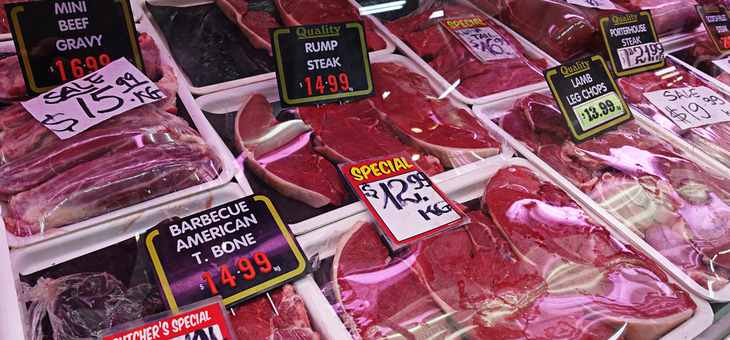The old 99-cent price tactic isn’t fooling anyone – any more – with new research revealing price tickets ending in ’99’ don’t fool consumers into thinking a product is less expensive and may actually backfire on sellers.
‘Just-below’ pricing – such as prices that read $39.99 instead of $40 – is a go-to tactic for sellers to convince customers something costs less than it actually does.
But research from Ohio State University shows the tactic may have the opposite effect.
Not only does it not fool customers into purchasing a product, but it makes them less inclined to upgrade to a more expensive version of the product or service, according to the research.
While the just-below price can make consumers feel as if they’re getting a good deal, it can also make the leap to a premium product seem too far, says study lead author Junha Kim.
“Going from $19.99 to $25 may seem like it will cost more than going from $20 to $26, even though it is actually less,” says Mr Kim.
“Crossing that round number threshold makes a big difference for consumers.”
Read: Dishonest retailers slammed for dodgy was/now pricing
The study analysed pricing and buying behaviour on items and services such as coffee, face masks, streaming services, cars and apartments.
“We found this effect works in experiential categories, as well as products. It replicated very consistently,” says study co-author Joseph Goodman.
One field study saw researchers set up a coffee stand, rotating the prices regularly, from small coffees with a ‘just below’ price of 95 cents to larger cup upgrades for $1.20.
With this pricing, customers had to spend more than $1 to upsize.
Then, they would change the price of the small cup to $1 and increase the price of the larger cup by 5 cents to $1.25, making both the larger and smaller cups more expensive than before.
While both prices meant a customer had to spend more than $1 to upgrade, the majority (56 per cent) upgraded to the larger cup when they didn’t have to cross the round-number boundary to upgrade ($1 to 1.25).
Only 29 per cent upgraded when the smaller cup was priced at 95 cents and they had to cross the $1 threshold for the larger cup.
“In other words, we sold more of the large coffee when it was objectively more expensive than it was earlier ($1.25 vs $1.20),” says study co-author Selin Malkoc.
“It was amazing how increasing prices – from $1.20 to $1.25 – actually increased sales. It is a testament to how strong the effect was.”
Read: Your pricing rights
Larger purchases with multiple upgrade options were also tested. Another study found consumers were more likely to choose a more expensive car or apartment when the base price was just above a round number instead of just below.
Mr Kim says the studies reflect how people feel about other threshold-crossing action in other aspects of life.
“Research has shown that going across a state boundary makes a destination seem farther away,” he says.
“It is crossing that threshold that makes a difference. In our studies, the round number is like the state boundary, magnifying the perception of a difference in price.”
Assoc. Prof. Goodman says the effect works mostly when people have no idea of what the ‘right’ price for a product or service should be. Such consumers use pricing as a context to help them understand if what they’re buying is actually expensive or inexpensive.
“For many of the things we purchase, price is perceptual. We have a feeling about whether the price is right or not,” he says.
“In our study, people often said an upgrade purchase seemed less expensive when the base price was above the round number, even though it was objectively more expensive.”
The effect does not, however, work with small price differences on expensive items or when people are already familiar with prices for a product or service.
Read: Supermarket tip that could save you thousands each year
Assoc. Prof. Malkoc adds that people who know prices well don’t rely on their perceptions, as many of the participants in this research did.
“As consumers, we need to realise that our perceptions are often flawed. We need to rely on actual numbers and not just our sense of what the numbers are,” she says.
How often do you fall for the ’99’ pricing tactic? Are you surprised that people would pay more for a product if it ‘felt’ like it didn’t jump up a price bracket? Why not share your thoughts in the comments section below?
If you enjoy our content, don’t keep it to yourself. Share our free eNews with your friends and encourage them to sign up.

